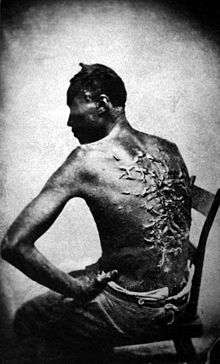Abolitionism in the United States
Abolitionism (or the Anti-Slavery Movement) in the United States of America was the movement which sought to end slavery in the United States immediately, active both before and during the American Civil War. In the Americas and western Europe, abolitionism was a movement which sought to end the Atlantic slave trade and set slaves free. In the 18th century, enlightenment thinkers condemned slavery on humanistic grounds and English Quakers and some Evangelical denominations condemned slavery as un-Christian. At that time, most slaves were Africans, but thousands of Native Americans were also enslaved. In the 18th century, as many as six million Africans were transported to the Americas as slaves, at least a third of them on British ships to North America. The colony of Georgia originally prohibited slavery.

Between 1780 and 1804 all Northern states, beginning with An Act for the Gradual Abolition of Slavery from Pennsylvania in 1780, passed legislation abolishing slavery, sometimes by gradual emancipation. Massachusetts ratified a constitution that declared all men equal; freedom suits challenging slavery based on this principle brought an end to slavery in the state. In Virginia, similar declarations of rights were interpreted by the courts as not applicable to Africans or African Americans. All the states banned the international slave trade by 1790. South Carolina did so in 1787 but in 1803 reversed itself.[2] During the ensuing decades, the abolitionist movement grew in Northern states, and Congress regulated the expansion of slavery as new states were admitted to the Union. The United States federal government criminalized the international slave trade in 1808 and made slavery unconstitutional in 1865 as a result of the American Civil War.
Historian James M. McPherson defines an abolitionist "as one who before the Civil War had agitated for the immediate, unconditional and total abolition of slavery in the United States". He does not include antislavery activists such as Abraham Lincoln, U.S. president during the Civil War, or the Republican Party, which called for the gradual ending of slavery.[3]
Abolitionism in the United States was an expression of moralism,[4] and frequently had a religious component to it: slavery was incompatible with Christianity, according to the many religious abolitionists. It often operated in tandem with another social reform effort, the temperance movement.
History
Colonial anti-slavery efforts
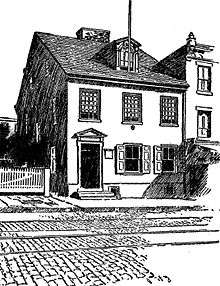
The statement against slavery in America was written in 1688 by the Religious Society of Friends (Quakers).[5] On 18 February 1688, Francis Daniel Pastorius of Germantown, Pennsylvania, drafted the 1688 Germantown Quaker Petition Against Slavery, a two-page condemnation of the practice of slavery and sent it to the governing bodies of their Quaker church. The intention of the document was to stop slavery within the Quaker community, where 70% of Quakers owned slaves between 1681 and 1705.[5] It acknowledged the universal rights of all people.[5] While the Quaker establishment did not take action at that time, the unusually early, clear and forceful argument in the 1688 Germantown Quaker Petition Against Slavery initiated the spirit that finally led to the end of slavery in the Society of Friends (1776) and in the commonwealth of Pennsylvania (1780). The Quaker Quarterly Meeting of Chester, Pennsylvania, made its first protest in 1711. Within a few decades the entire slave trade was under attack, being opposed by such Quaker leaders as William Burling, Benjamin Lay, Ralph Sandiford, William Southby, and John Woolman.[6]
Slavery was banned in the colony of Georgia soon after its founding in 1733. The colony's founder, James Edward Oglethorpe, fended off repeated attempts by South Carolina merchants and land speculators to introduce slavery to the colony. In 1739, he wrote to the Georgia Trustees urging them to hold firm:
If we allow slaves we act against the very principles by which we associated together, which was to relieve the distresses. Whereas, now we should occasion the misery of thousands in Africa, by setting men upon using arts to buy and bring into perpetual slavery the poor people who now live there free.
— James Edward Oglethorpe, 1739[7]
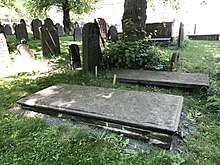
The struggle between Georgia and South Carolina led to the first debates in Parliament over the issue of slavery, occurring between 1740 and 1742.[7] Within the British Empire, the Massachusetts courts began to follow England when, in 1772, denied slave owners in England the legal right to move a slave out of England against the slave's will. The decision (see Somerset v Stewart) did not apply to the colonies. Between 1764 and 1774, seventeen slaves appeared in Massachusetts courts to sue their owners for freedom.[8] Boston lawyer Benjamin Kent represented slaves in court against their masters in the mid-18th century.[9] In 1766, Kent won a case (Slew vs. Whipple) to liberate Jenny Slew a mixed-race woman who had been kidnapped and held as a slave.[10]
During the formation of the country

The Society for the Relief of Free Negroes Unlawfully Held in Bondage (Pennsylvania Abolition Society) was the first American abolition society, formed 14 April 1775, in Philadelphia, primarily by Quakers. The society suspended operations during the American Revolutionary War and was reorganized in 1784, with Benjamin Franklin as its first president.[11] Rhode Island Quakers, associated with Moses Brown, were among the first in America to free slaves. Benjamin Rush was another leader, as were many Quakers. John Woolman gave up most of his business in 1756 to devote himself to campaigning against slavery along with other Quakers.[12] One of the first articles advocating the emancipation of slaves and the abolition of slavery was written by Thomas Paine. Titled "African Slavery in America", it appeared on 8 March 1775 in the Postscript to the Pennsylvania Journal and Weekly Advertiser.[13]
The Constitution had several provisions which accommodated slavery, although none used the word. Passed unanimously by the Congress of the Confederation in 1787, the Northwest Ordinance forbade slavery in the Northwest Territory, a vast area (the future Ohio, Indiana, Illinois, Michigan, and Wisconsin) in which slavery had been legal, but population was sparse.
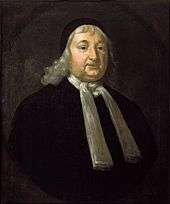
American abolitionism began very early, well before the United States was founded as a nation. An early law passed by Roger Williams and Samuel Gorton because it contradicted their Protestant beliefs abolished slavery (but not temporary indentured servitude) in Rhode Island in 1652; however, it floundered within 50 years,[14] and Rhode Island became involved in the slave trade in 1700.[15] Samuel Sewall, a prominent Bostonian and one of the judges at the Salem Witch Trials, wrote The Selling of Joseph[16] in protest of the widening practice of outright slavery as opposed to indentured servitude in the colonies. This is the earliest-recorded anti-slavery tract published in the future United States.
In 1777, independent Vermont, not yet a state, became the first polity in North America to prohibit slavery: slaves were not directly freed, but masters were required to remove slaves from Vermont. The first state to begin a gradual abolition of slavery was Pennsylvania, in 1780. All importation of slaves was prohibited, but none were freed at first, only the slaves of masters who failed to register them with the state, along with the "future children" of enslaved mothers. Those enslaved in Pennsylvania before the 1780 law went into effect were not freed until 1847.[17]
In the 18th century, Thomas Jefferson and some of his contemporaries had plans to abolish slavery. Despite the fact that Jefferson was a lifelong slaveholder, he had included strong anti-slavery language in the original draft of the Declaration of Independence, but other delegates removed it.[18] Benjamin Franklin, also a slaveholder for most of his life, was a leading member of the Pennsylvania Abolition Society, the first recognized organization for abolitionists in the United States.[19]

Massachusetts took a much more radical position. In 1783, its Supreme Court, in the case of Commonwealth v. Nathaniel Jennison, reaffirmed the case of Brom and Bett v. Ashley, which held that even slaves were people that had a constitutional right to liberty. This gave freedom to slaves, effectively abolishing slavery. States with a greater economic interest in slaves, such as New York and New Jersey, passed gradual emancipation laws. While some of these laws were gradual, these states enacted the first abolition laws in the entire "New World".[20] In New Jersey, slavery was not prohibited until the Thirteenth Amendment.
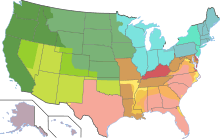
All of the other states north of Maryland began gradual abolition of slavery between 1781 and 1804, based on the Pennsylvania model. By 1804, all the Northern states passed laws to abolish it. Some slaves continued in involuntary, unpaid "indentured servitude" for two more decades, and others were moved south and sold to new owners in slave states.
Some individual slaveholders, particularly in the upper South, freed slaves, sometimes in their wills. Many noted they had been moved by the revolutionary ideals of the equality of men. The number of free blacks as a proportion of the black population in the upper South increased from less than 1 percent to nearly 10 percent between 1790 and 1810 as a result of these actions. Some slave owners, concerned about the increase in free blacks, which they viewed as destabilizing, freed slaves on condition that they emigrate to Africa.
The South after 1804
The institution remained solid in the South, and that region's customs and social beliefs evolved into a strident defense of slavery in response to the rise of a stronger anti-slavery stance in the North. In 1835 alone, abolitionists mailed over a million pieces of anti-slavery literature to the South, giving rise to the gag rules in Congress.
In 1820, Thomas Jefferson privately supported the Missouri Compromise, believing it would help end slavery,[18][21] but his views on slavery were complicated, and possibly contradictory.[22] His will freed only a small fraction of Monticello plantation.[23]
Under the Constitution, the importation of enslaved persons could not be prohibited until 1808 (20 years). As the end of the 20 years approached, an Act Prohibiting Importation of Slaves sailed through Congress with little opposition. President Jefferson supported it, and it went effect on January 1, 1808.
In 1820, the Act to Protect the Commerce of the United States and Punish the Crime of Piracy was passed. This law made importing slaves into the United States a death penalty offense. The Confederate States of America continued this prohibition with the sentence of death and prohibited the import of slaves.
Abolitionism's sudden emergence
In 1830 most Americans were, at least in principle, opposed to slavery. The problem was how to end it, and what would become of the slaves once they were free. In the 1830s there was a progressive shift in thinking in the North, from gradual emancipation and resettlement of freed blacks in Africa (see American Colonization Society), to immediatism: freeing all the slaves immediately and sorting out the problems later. This change was in many cases sudden, a consequence of the individual's coming in direct contact with the horrors of American slavery, or hearing of them from a creditable source. As it was put by Amos Adams Lawrence, who witnessed the capture and return to slavery of Anthony Burns, "we went to bed one night old-fashioned, conservative, Compromise Union Whigs and waked up stark mad Abolitionists."[24]
Garrison and immediate emancipation
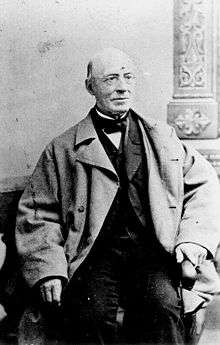
The American beginning of abolitionism as a political movement is usually dated from 1 January 1831, when William Lloyd Garrison published the first issue of his new weekly newspaper, The Liberator (1831), which published without interruption until slavery in the United States was abolished in 1865 (when it closed). It was followed shortly by his book Thoughts on African Colonization (1832), in which he attacked severely the policy of sending blacks to (not "back to") Africa, and specifically the American Colonization Society. The Colonization Society, which he had previously supported, is "a creature without heart, without brains, eyeless, unnatural, hypocritical, relentless and unjust."[25]:15 "Colonization", according to Garrison, was not a plan to eliminate slavery, but to protect it. As it was put by a Garrison supporter:
It is no object of the Colonization Society to ameliorate the condition of the slave.... The thing is, to get them out of the way; the welfare of the negro is not consulted at all.[25]:13, 15
Its biggest supporters and presidents, such as Henry Clay, were slave owners. Sending free blacks to Africa, getting rid of them, removed a danger: the existence of free blacks in the United States, who slaveowners believed, not without reason, encouraged or even assisted slaves to escape to a free state, or Canada. Garrison also pointed out that a majority of the colonists died of disease, and the number of free blacks actually resettled in the future Liberia was minute in comparison to the number of slaves in the United States. As put by the same supporter:
As a remedy for slavery, it must be placed amongst the grossest of all delusions. In fifteen years it has transported less than three thousand persons to the African coast; while the increase on their numbers, in the same period, is about seven hundred thousand!"[25]:11
Immediate abolition
Abolitionists included those who joined the American Anti-Slavery Society or its auxiliary groups in the 1830s and 1840s, as the movement fragmented.[26] The fragmented anti-slavery movement included groups such as the Liberty Party; the American and Foreign Anti-Slavery Society; the American Missionary Association; and the Church Anti-Slavery Society. Historians traditionally distinguish between moderate antislavery reformers or gradualists, who concentrated on stopping the spread of slavery, and radical abolitionists or immediatists, whose demands for unconditional emancipation often merged with a concern for Black civil rights. However, James Stewart advocates a more nuanced understanding of the relationship of abolition and antislavery prior to the Civil War:
While instructive, the distinction [between antislavery and abolition] can also be misleading, especially in assessing abolitionism's political impact. For one thing, slaveholders never bothered with such fine points. Many immediate abolitionists showed no less concern than did other white Northerners about the fate of the nation's "precious legacies of freedom". Immediatism became most difficult to distinguish from broader anti-Southern opinions once ordinary citizens began articulating these intertwining beliefs.[27]
Anti-slavery advocates were outraged by the murder on 7 November 1837 of Elijah Parish Lovejoy, a white man and editor of an abolitionist newspaper, by a pro-slavery mob in Illinois. Nearly all Northern politicians, such as Abraham Lincoln, rejected the "immediate emancipation" called for by the abolitionists, seeing it as "extreme". Indeed, many Northern leaders, including Lincoln, Stephen Douglas (the Democratic nominee in 1860), John C. Fremont (the Republican nominee in 1856), and Ulysses S. Grant married into slave-owning Southern families without any moral qualms.
Antislavery as a principle was far more than just the wish to limit the extent of slavery. After 1840, abolitionists rejected this because it let sin continue to exist; they demanded that slavery end immediately and everywhere. John Brown was the only abolitionist to have actually planned a violent insurrection, though David Walker promoted the idea. The abolitionist movement was strengthened by the activities of free African Americans, especially in the Black church, who argued that the old Biblical justifications for slavery contradicted the New Testament.
African-American activists and their writings were rarely heard outside the Black community. However, they were tremendously influential on some sympathetic white people, most prominently the first white activist to reach prominence, Wm. Lloyd Garrison, who was its most effective propagandist. Garrison's efforts to recruit eloquent spokesmen led to the discovery of ex-slave Frederick Douglass, who eventually became a prominent activist in his own right. Eventually, Douglass would publish his own widely distributed abolitionist newspaper, North Star.
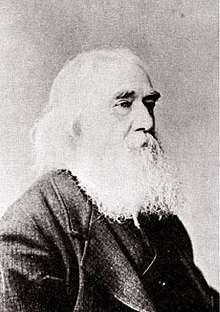
In the early 1850s, the American abolitionist movement split into two camps over the issue of the United States Constitution. This issue arose in the late 1840s after the publication of The Unconstitutionality of Slavery by Lysander Spooner. The Garrisonians, led by Garrison and Wendell Phillips, publicly burned copies of the Constitution, called it a pact with slavery, and demanded its abolition and replacement. Another camp, led by Lysander Spooner, Gerrit Smith, and eventually Douglass, considered the Constitution to be an anti-slavery document. Using an argument based upon Natural Law and a form of social contract theory, they said that slavery existed outside the Constitution's scope of legitimate authority and therefore should be abolished.
Another split in the abolitionist movement was along class lines. The artisan republicanism of Robert Dale Owen and Frances Wright stood in stark contrast to the politics of prominent elite abolitionists such as industrialist Arthur Tappan and his evangelist brother Lewis. While the former pair opposed slavery on a basis of solidarity of "wage slaves" with "chattel slaves", the Whiggish Tappans strongly rejected this view, opposing the characterization of Northern workers as "slaves" in any sense. (Lott, 129–30)
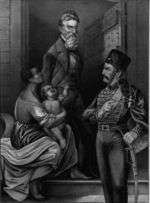
Many American abolitionists took an active role in opposing slavery by supporting the Underground Railroad.[28] This was made illegal by the federal Fugitive Slave Law of 1850. Nevertheless, participants like Harriet Tubman, Henry Highland Garnet, Alexander Crummell, Amos Noë Freeman, and others continued with their work. Abolitionists were particularly active in Ohio, where some worked directly in the Underground Railroad. Since the state shared a border with slave states, it was a popular place for slaves escaping across the Ohio River and up its tributaries, where they sought shelter among supporters who would help them move north to freedom. Two significant events in the struggle to destroy slavery were the Oberlin-Wellington Rescue and John Brown's raid on Harpers Ferry. In the South, members of the abolitionist movement or other people opposing slavery were often targets of lynch mob violence before the American Civil War.[29]
Numerous known abolitionists lived, worked, and worshipped in downtown Brooklyn, from Henry Ward Beecher, who auctioned slaves into freedom from the pulpit of Plymouth Church, to Nathan Egelston, a leader of the African and Foreign Antislavery Society, who also preached at Bridge Street AME and lived on Duffield Street. His fellow Duffield Street residents Thomas and Harriet Truesdell were leading members of the Abolitionist movement. Mr. Truesdell was a founding member of the Providence Anti-slavery Society before moving to Brooklyn in 1851. Harriet Truesdell was also very active in the movement, organizing an antislavery convention in Pennsylvania Hall (Philadelphia). Another prominent Brooklyn-based abolitionist was Rev. Joshua Leavitt, trained as a lawyer at Yale, who stopped practicing law in order to attend Yale Divinity School, and subsequently edited the abolitionist newspaper The Emancipator and campaigned against slavery, as well as advocating other social reforms. In 1841, Leavitt published The Financial Power of Slavery, which argued that the South was draining the national economy due to its reliance on slavery.
Abolitionism at colleges
Western Reserve College
Both Garrison's newspaper The Liberator and his book Thoughts on African Colonization (1832) arrived shortly after publication at Western Reserve College, in Hudson, Ohio, which was briefly the center of abolitionist discourse in the United States. (John Brown grew up in Hudson.) The readers, including college president Charles Backus Storrs, found Garrison's arguments and evidence convincing. Abolition versus colonization rapidly became the primary issue on the campus, to the point that Storrs complained in writing that nothing else was being discussed.[30]:26
The college's chaplain and theology professor Beriah Green said that "his Thoughts and his paper (The Liberator) are worthy of the eye and the heart of every American."[31]:49 Green delivered in the college chapel in November and December 1832 four sermons supporting immediate abolition of slavery. These so offended the college's trustees, more conservative than either the students or the faculty, that Green resigned, expecting that he would be fired. Elizur Wright, another professor, resigned soon afterwards and became the first secretary of the American Anti-Slavery Society, of which Green was the first president. Storrs contracted tuberculosis, took a leave of absence, and died within six months.[30]:28 This left the school with only one of its four professors.
Oneida Institute for Science and Industry
Green was soon hired as the new president of the Oneida Institute. Under the previous president, George Washington Gale, there had been a mass walkout of students; among the issues was Gale's lack of support for abolition.
He accepted the position on conditions that 1) he be allowed to preach "immediatism", immediate emancipation, and 2) that African-American students be admitted on the same terms as white students. These were accepted, and we know the names of 16 Blacks who studied there. Native American students, of whom we know the names of two, were openly accepted as well.
Under Green, Oneida became "a hotbed of anti-slavery activity."[30]:44 It was "abolitionist to the core, more so than any other American college."[30]:46 For Presbyterian minister and Bible professor Green, slavery was not just an evil but a sin, and abolitionism was what Christ's principles mandated. Under him a cadre of abolitionists was trained, who then carried the abolitionist message, via lectures and sermons, throughout the North. Many future well-known black leaders and abolitionists were students at Oneida while Green was president. These include William Forten (son of James Forten), Alexander Crummell, Rev. Henry Highland Garnet and Rev. Amos Noë Freeman.
Lane Theological Seminary
The Oneida Institute did not have an incident, like that of Western Reserve, which brought national attention to it. Its successor, Lane Theological Seminary, in Cincinnati, did.
"Lane was Oneida moved west."[32]:55 Leading the exodus from Oneida was a former Oneida student, and private student of Gale before that, Theodore Dwight Weld. He had been hired by the philanthropist brothers, and abolitionists, Arthur and Lewis Tappan to find a location for a national manual labor school, since Oneida, a manual labor school, was a disappointment, according to Weld and his student followers. (The manual labor school movement had students work about 3 hours a day on farms or in small factories or plants, such as Oneida's printing shop, and was intended to provide needy students with funds for their education – a form of work-study – while at the same time providing them the newly recognized health and spiritual (psychological) benefits of exercise.)
At the same time that Weld was scouting a location for a new school, the barely-functioning Lane Theological Seminary was looking for students. Based on Weld's recommendation, the Tappans approved the choice, and started giving Lane much of the financial support they had previously given Oneida. Weld, though on paper enrolled as a student at Lane, was de facto its head, choosing, through his recommendations to the Tappans, the president (Lyman Beecher, after Charles Grandison Finney, who became later the second president of Oberlin, turned it down), and telling the trustees whom to hire.[32]:54
Students, many of whom considered him the real leader of Lane,[33]:77 responded to Weld's announcement of the new school.
[Y]oung men gathered in Cincinnati "as from the hives of the north". Most of them were from western New York. H. B. Stanton and a few others from Rochester floated down the Ohio from Pittsburgh on a raft. More than a score came from Oneida Institute. Even more arrived from Utica and Auburn, Finney's converts all. From Tennessee came Weld's disciple, Marius Robinson, and across the Ohio from Kentucky came James Thome, scion of a wealthy planting family. Up from Alabama journeyed two others of Weld's disciples, the sons of the Rev. Dr. Allan. From Virginia came young Hedges; and from Missouri, Andrew, of the famous family of Benton. From the South came another, James Bradley, a Negro who had bought his freedom from slavery with the earnings of his own hands. Most of these students were mature; only eleven were less than twenty-one years old; twelve of them had been agents for the national benevolent societies, and six were married men with families. The theological class was the largest that had ever gathered in America, and its members were deeply conscious of their importance.[34]:46
Lane ended up with about 100 students, the most of any seminary in America.
Lane Seminary debates
No sooner had this disparate group of former Oneida students and others arrived at Lane, under the leadership of Weld, they formed an anti-slavery society. They then proceeded to hold a well-publicized series of debates on abolition versus African colonialism, lasting 18 evenings, and decided that abolitionism was a much better solution to slavery.
These debates alarmed Lane trustees and president, who feared violence, since Cincinnati was strongly anti-abolitionist (see Cincinnati riots of 1829). They immediately prohibited any future such "off-the-topic" discussions. The students, again led by Weld, felt that abolitionism was so important – it was their responsibility as Christians to promote it – that they resigned en masse, joined by Asa Mahan, a trustee who supported the students. With support by the Tappans, they briefly tried to establish a new seminary, but as this did not prove a practical solution they accepted a proposal that they move to the new Oberlin Collegiate Institute.
Oberlin Collegiate Institute
The following year Weld encouraged a group of students at Lane Theological Seminary to form an anti-slavery society. After the president, Lyman Beecher, tried to suppress the group, the students moved to Oberlin College.
Due to its students' anti-slavery position, Oberlin soon became one of the most liberal colleges and accepted African-American students. Along with Garrison, Northcutt and Collins were proponents of immediate abolition. Abby Kelley Foster became an "ultra abolitionist" and a follower of William Lloyd Garrison. She led Susan B. Anthony as well as Elizabeth Cady Stanton into the anti-slavery cause.
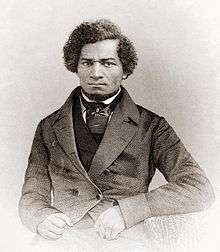
After 1840, "abolition" usually referred to positions similar to Garrison's. It was largely an ideological movement led by about 3,000 people, including free blacks and free people of color, many of whom, such as Frederick Douglass in New England, and Robert Purvis and James Forten in Philadelphia, played prominent leadership roles. Douglass became legally free during a two-year stay in England, as British supporters raised funds to purchase his freedom from his American owner Thomas Auld, and also helped fund his abolitionist newspapers in the United States.[35] Abolitionism had a strong religious base including Quakers, and people converted by the revivalist fervor of the Second Great Awakening, led by Charles Finney in the North, in the 1830s. Belief in abolition contributed to the breaking away of some small denominations, such as the Free Methodist Church.
Evangelical abolitionists founded some colleges, most notably Bates College in Maine and Oberlin College in Ohio. The movement attracted such figures as Yale president Noah Porter and Harvard president Thomas Hill.[36]
In the North, most opponents of slavery supported other modernizing reform movements such as the temperance movement, public schooling, and prison- and asylum-building. They were split on the issue of women's activism and their political role, and this contributed to a major rift in the Society. In 1839, brothers Arthur Tappan and Lewis Tappan left the Society and formed the American and Foreign Anti-Slavery Society, which did not admit women. Other members of the Society, including Charles Turner Torrey, Amos Phelps, Henry Stanton, and Alanson St. Clair, in addition to disagreeing with Garrison on the women's issue, urged taking a much more activist approach to abolitionism and consequently challenged Garrison's leadership at the Society's annual meeting in January 1839. When the challenge was beaten back,[37] they left and founded the New Organization, which adopted a more activist approach to freeing slaves. Soon after, in 1840, they formed the Liberty Party, which had as its sole platform the abolition of slavery.[38] By the end of 1840, Garrison himself announced the formation of a third new organization, the Friends of Universal Reform, with sponsors and founding members including prominent reformers Maria Chapman, Abby Kelley Foster, Oliver Johnson, and Bronson Alcott (father of Louisa May Alcott).
.jpg)
Abolitionists such as William Lloyd Garrison repeatedly condemned slavery for contradicting the principles of freedom and equality on which the country was founded. In 1854, Garrison wrote:
I am a believer in that portion of the Declaration of American Independence in which it is set forth, as among self-evident truths, "that all men are created equal; that they are endowed by their Creator with certain inalienable rights; that among these are life, liberty, and the pursuit of happiness." Hence, I am an abolitionist. Hence, I cannot but regard oppression in every form – and most of all, that which turns a man into a thing – with indignation and abhorrence. Not to cherish these feelings would be recreancy to principle. They who desire me to be dumb on the subject of slavery, unless I will open my mouth in its defense, ask me to give the lie to my professions, to degrade my manhood, and to stain my soul. I will not be a liar, a poltroon, or a hypocrite, to accommodate any party, to gratify any sect, to escape any odium or peril, to save any interest, to preserve any institution, or to promote any object. Convince me that one man may rightfully make another man his slave, and I will no longer subscribe to the Declaration of Independence. Convince me that liberty is not the inalienable birthright of every human being, of whatever complexion or clime, and I will give that instrument to the consuming fire. I do not know how to espouse freedom and slavery together.[39]
Uncle Tom's Cabin

The most influential abolitionist publication was Uncle Tom's Cabin (1852), the best-selling novel and play by Harriet Beecher Stowe, who had attended the anti-slavery debates at Lane, of which her father, Lyman Beecher, was the president. Outraged by the Fugitive Slave Law of 1850 (which made the escape narrative part of everyday news), Stowe emphasized the horrors that abolitionists had long claimed about slavery. Her depiction of the evil slave owner Simon Legree, a transplanted Yankee who kills the Christ-like Uncle Tom, outraged the North, helped sway British public opinion against the South, and inflamed Southern slave owners who tried to refute it by showing some slave owners were humanitarian.[40] It inspired numerous anti-Tom, pro-slavery novels, several written and published by women.
Events leading to the Emancipation Proclamation
In the 1850s, slavery remained legal in all 16 states of the American South. While it was fading away in the cities and border states, it remained strong in plantation areas that grew cash crops such as cotton, sugar, rice, tobacco or hemp. By the 1860 United States Census, the slave population in the United States had grown to four million.[41] American abolitionism was based in the North, and white Southerners alleged it fostered slave rebellion.
The white abolitionist movement in the North was led by social reformers, especially William Lloyd Garrison, founder of the American Anti-Slavery Society, and writers such as John Greenleaf Whittier and Harriet Beecher Stowe. Black activists included former slaves such as Frederick Douglass, and free blacks such as the brothers Charles Henry Langston and John Mercer Langston, who helped to found the Ohio Anti-Slavery Society.[42][lower-alpha 1]
Some abolitionists said that slavery was criminal and a sin; they also criticized slave owners of using black women as concubines and taking sexual advantage of them.[45]
Compromise of 1850
The Compromise of 1850 attempted to resolve issues surrounding slavery caused by the War with Mexico and the admission to the Union of the slave Republic of Texas. The Compromise of 1850 was proposed by "The Great Compromiser" Henry Clay and was passed by Senator Stephen A. Douglas. Through the compromise, California was admitted as a free state after its state convention unanimously opposed slavery there, Texas was financially compensated for the loss of its territories, the slave trade (not slavery) was abolished in the District of Columbia, and the Fugitive Slave Law was passed as a concession to the South. Abolitionists were outraged because the new law required Northerners to help in the capture and return of runaway slaves.[46]
Republican Party
In 1854, Congress passed the Kansas–Nebraska Act, which opened those territories to slavery if the local residents voted that way. The antislavery gains made in previous compromises were reversed. A firestorm of outrage brought together former Whigs, Know-Nothings, and former Free Soil Democrats to form a new party in 1854–56, the Republican Party. It included a program of rapid modernization involving the government promotion of industry, railroads, banks, free homesteads, and colleges, all to the annoyance of the South. The new party denounced the Slave Power – that is the political power of the slave owners who supposedly controlled the national government for their own benefit and to the disadvantage of the ordinary white man.[47]
The Republican Party wanted to achieve the gradual extinction of slavery by market forces, because its members believed that free labor was superior to slave labor. Southern leaders said the Republican policy of blocking the expansion of slavery into the West made them second-class citizens, and challenged their autonomy. With the 1860 presidential victory of Abraham Lincoln, seven Deep South states whose economy was based on cotton and slavery decided to secede and form a new nation. The American Civil War broke out in April 1861 with the firing on Fort Sumter in South Carolina. When Lincoln called for troops to suppress the rebellion, four more slave states seceded.
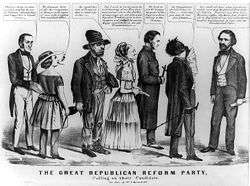
Western explorer John C. Frémont ran as the first Republican nominee for president in 1856. The new party crusaded on the slogan: "Free soil, free silver, free men, Frémont and victory!" Although he lost, the party showed a strong base. It dominated in Yankee areas of New England, New York and the northern Midwest, and had a strong presence in the rest of the North. It had almost no support in the South, where it was roundly denounced in 1856–60 as a divisive force that threatened civil war.[48]
Without using the term "containment", the new Party in the mid-1850s proposed a system of containing slavery, once it gained control of the national government. Historian James Oakes explains the strategy:
The federal government would surround the south with free states, free territories, and free waters, building what they called a "cordon of freedom" around slavery, hemming it in until the system's own internal weaknesses forced the slave states one by one to abandon slavery.[49]
Abolitionists demanded immediate emancipation not a slow-acting containment. They rejected the new party, and in turn its leaders reassured voters they were not abolitionists.
John Brown's raid on Harpers Ferry
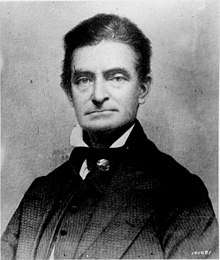
Historian Frederick Blue called John Brown "the most controversial of all 19th-century Americans".[50] When Brown was hanged after his attempt to start a slave rebellion in 1859, church bells rang, minute guns were fired, large memorial meetings took place throughout the North, and famous writers such as Ralph Waldo Emerson and Henry David Thoreau joined many Northerners in praising Brown.[51] Whereas Garrison was a pacifist, Brown resorted to violence.
Historians agree he played a major role in starting the war. Some historians regard Brown as a crazed lunatic, while David S. Reynolds hails him as the man who "killed slavery, sparked the civil war, and seeded civil rights". For Ken Chowder he is "the father of American terrorism".[52]
His raid in October 1859 involved a band of 22 men who seized the Federal armory at Harper's Ferry, West Virginia (then part of Virginia), knowing it contained tens of thousands of weapons. Brown believed the South was on the verge of a gigantic slave uprising and that one spark would set it off. Brown's supporters George Luther Stearns, Franklin B. Sanborn, Thomas Wentworth Higginson, Theodore Parker, Samuel Gridley Howe, and Gerrit Smith were all abolitionists, members of the Secret Six who provided financial backing for Brown's raid. Brown's raid, says historian David Potter, "was meant to be of vast magnitude and to produce a revolutionary slave uprising throughout the South". The raid did not go as expected. Not a single slave revolted. Lt. Colonel Robert E. Lee of the U.S. Army was dispatched to put down the raid, and Brown was quickly captured. Brown was tried for treason against Virginia and hanged. At his trial, Brown exuded a remarkable zeal and single-mindedness that played directly to Southerners' worst fears. Under Virginia law there was a month between the sentencing and the hanging, and in those weeks Brown spoke gladly with reporters and anyone else who wanted to see him, and wrote many letters. Few individuals did more to cause secession than John Brown, because Southerners believed he was right about an impending slave revolt. The day of his execution, Brown prophesied, "the crimes of this guilty land will never be purged away but with blood. I had as I now think vainly flattered myself that without very much bloodshed it might be done."[53]
American Civil War
From the beginning of the American Civil War, Union leaders identified slavery as the social and economic foundation of the Confederacy, and from 1862 were determined to end that support system. The first federal act taken against slavery during the war occurred on 16 April 1862, when Lincoln signed the District of Columbia Compensated Emancipation Act, which abolished slavery in Washington D. C. A few months later on June 19, Congress banned slavery in all federal territories, fulfilling Lincoln's 1860 campaign promise to ban the expansion of slavery.[55] Meanwhile, the Union suddenly found themselves dealing with a steady stream of escaped slaves from the South rushing to Union lines. In response, Congress passed the Confiscation Acts, which essentially declared escaped slaves from the South to be confiscated war property, and thus did not have to be returned to their masters in the Confederacy. Although the initial act did not mention emancipation, the second Confiscation act, passed on 17 July 1862, stated that escaped or liberated slaves belonging to anyone who participated in or supported the rebellion "shall be deemed captives of war, and shall be forever free of their servitude, and not again held as slaves." Pro-Union forces gained control of the Border States and began the process of emancipation in Maryland, Missouri, and West Virginia. All three states would abolish slavery before the end of the war. Lincoln issued the Emancipation Proclamation on 1 January 1863. The passage of the Thirteenth Amendment (ratified in December 1865) abolished slavery in the United States, officially freeing more than 50,000 people still enslaved in Kentucky and Delaware.[56][57][58]
In 1863, Lincoln issued the Emancipation Proclamation, which freed slaves held in the Confederate States that were not currently under Union control. Border states, except Delaware and Kentucky, began their own emancipation programs. Thousands of slaves escaped to freedom behind Union Army lines, and in 1863 many men started serving as the United States Colored Troops. In June 1864, the Fugitive Slave Act was repealed. The 13th Amendment to the U.S. Constitution took effect in December 1865 and ended slavery throughout the United States, except as a punishment for crime. Until it was ratified, slaves still existed in the Border states, the slave states that did not secede: Delaware, Maryland, Kentucky, and Missouri.
The Amendment also abolished slavery among the Indian tribes.
Variations by area
Abolition in the North
.jpg)
The abolitionist movement began about the time of the United States' independence. Quakers played a big role. The first abolition organization was the Pennsylvania Abolition Society, which first met in 1775; Benjamin Franklin was its president.[59] The New York Manumission Society was founded in 1785 by powerful politicians: John Jay, Alexander Hamilton, and Aaron Burr.
There is quite a bit of confusion about the dates in which slavery was abolished in the Northern states, because "abolishing slavery" meant different things in different states. (Theodore Weld, in his pamphlet opposing slavery in the District of Columbia, gives a detailed chronology.[60]) It is true that beginning with the independent Republic of Vermont in 1777, all states north of the Ohio River and the Mason–Dixon line that separated Pennsylvania from Maryland passed laws that abolished slavery, although in some cases the process was scheduled to take decades to be fully effective. These included the first abolition laws in the entire New World:[20] the Massachusetts Constitution, adopted in 1780, declared all men to have rights, making slavery unenforceable, and it disappeared through the individual actions of both masters and slaves.[61] However what the abolition forces passed in 1799 in New York state was an Act for the Gradual Abolition of Slavery.[62] New Jersey abolished slavery in 1804,[63] but in 1860 a dozen blacks were still held as "perpetual apprentices".[64][65]
In the Northwest Ordinance of 1787, the Congress of the Confederation prohibited slavery in the territories northwest of the Ohio River.
At the Constitutional Convention of 1787, slavery was the most contentious topic. Outright prohibition of slavery was impossible, as the Southern states (Georgia, South Carolina, North Carolina, Virginia, Maryland, and Delaware) would never have agreed. The only restriction on slavery that could be agreed on was the prohibition of the importation of slaves, and even that prohibition was postponed for 20 years. By that time, all the states except South Carolina had passed laws abolishing or severely limiting the importation of slaves.[66] When 1808 approached, then-President Thomas Jefferson, in his 1806 annual message to Congress (State of the Union), proposed legislation, approved by Congress with little controversy in 1807, prohibiting the importation of slaves into the United States effective the first day the Constitution permitted, 1 January 1808. As he put it, this would "withdraw the citizens of the United States from all further participation in those violations of human rights...which the morality, the reputation, and the best of our country have long been eager to proscribe".[67][68] However, about 1,000 slaves per year continued to be illegally brought (smuggled) into the United States;[69] see Wanderer and Clotilda. This was primarily via Spanish Florida and the Gulf Coast;[70] the United States acquired Florida from Spain in 1819, effective 1821, in part as a slave-control measure: no imports coming in, and certainly no fugitives escaping into a refuge.
Congress declined to pass any restriction on the lucrative interstate slave trade, which expanded to replace the supply of African slaves (see Slavery in the United States#Slave trade).
Manumission by Southern owners
After 1776, Quaker and Moravian advocates helped persuade numerous slaveholders in the Upper South to free their slaves. Manumissions increased for nearly two decades. Many individual acts by slaveholders freed thousands of slaves. Slaveholders freed slaves in such numbers that the percentage of free black people in the Upper South increased from 1 to 10 percent, with most of that increase in Virginia, Maryland and Delaware. By 1810 three-quarters of blacks in Delaware were free. The most notable of men offering freedom was Robert Carter III of Virginia, who freed more than 450 people by "Deed of Gift", filed in 1791. This number was more slaves than any single American had freed before or after.[71] Often slaveholders came to their decisions by their own struggles in the Revolution; their wills and deeds frequently cited language about the equality of men supporting the decision to set slaves free. The era's changing economy also encouraged slaveholders to release slaves. Planters were shifting from labor-intensive tobacco to mixed-crop cultivation and needed fewer slaves.[72]
Together with African Americans freed before the Revolution, the newly free black families began to thrive. By 1860, 91.7% of the blacks in Delaware and 49.7% of the those in Maryland were free. Such early free families often formed the core of artisans, professionals, preachers, and teachers in future generations.[72]
Western territories

During Congressional debate in 1820 on the proposed Tallmadge Amendment, which sought to limit slavery in Missouri as it became a state, Rufus King declared that "laws or compacts imposing any such condition [slavery] upon any human being are absolutely void, because contrary to the law of nature, which is the law of God, by which he makes his ways known to man, and is paramount to all human control". The amendment failed and Missouri became a slave state. According to historian David Brion Davis, this may have been the first time in the world that a political leader openly attacked slavery's perceived legality in such a radical manner.
Beginning in the 1830s, the U.S. Postmaster General refused to allow the mails to carry abolition pamphlets to the South.[73] Northern teachers suspected of abolitionism were expelled from the South, and abolitionist literature was banned. One Northerner, Amos Dresser (1812–1904), in 1835 was tried in Nashville, Tennessee, for possessing anti-slavery publications, convicted, and as punishment was whipped publicly.[74][75] Southerners rejected the denials of Republicans that they were abolitionists. They pointed to John Brown's attempt in 1859 to start a slave uprising as proof that multiple Northern conspiracies were afoot to ignite slave rebellions. Although some abolitionists did call for slave revolts, no evidence of any other Brown-like conspiracy has been discovered.[76] The North felt threatened as well, for as Eric Foner concludes, "Northerners came to view slavery as the very antithesis of the good society, as well as a threat to their own fundamental values and interests".[77] The famous, "fiery" abolitionist Abby Kelley Foster, from Massachusetts, was considered an "ultra" abolitionist who believed in full civil rights for all black people. She held to the view that the freed slaves would colonize Liberia. Parts of the anti-slavery movement became known as "Abby Kellyism". She recruited Susan B Anthony and Lucy Stone to the movement. Effingham Capron, a cotton and textile scion, who attended the Quaker meeting where Abby Kelley Foster and her family were members, became a prominent abolitionist at the local, state, and national levels.[78] The local anti-slavery society at Uxbridge, Massachusetts, had more than 25% of the town's population as members.[78]
Abolitionist viewpoints
Religion and morality
The Second Great Awakening of the 1820s and 1830s in religion inspired groups that undertook many types of social reform. For some that included the immediate abolition of slavery as they considered it sinful to hold slaves as well as to tolerate slavery. Opposition to slavery, for example, was one of the works of piety of the Methodist Churches, which were established by John Wesley.[79] "Abolitionist" had several meanings at the time. The followers of William Lloyd Garrison, including Wendell Phillips and Frederick Douglass, demanded the "immediate abolition of slavery", hence the name, also called "immediatism". A more pragmatic group of abolitionists, such as Theodore Weld and Arthur Tappan, wanted immediate action, but were willing to support a program of gradual emancipation, with a long intermediate stage.
"Antislavery men", such as John Quincy Adams, did not call slavery a sin. They called it an evil feature of society as a whole. They did what they could to limit slavery and end it where possible, but were not part of any abolitionist group. For example, in 1841, John Quincy Adams represented the Amistad African slaves in the Supreme Court of the United States and argued that they should be set free.[80] In the last years before the war, "antislavery" could refer to the Northern majority, such as Abraham Lincoln, who opposed expansion of slavery or its influence, as by the Kansas–Nebraska Act or the Fugitive Slave Act. Many Southerners called all these abolitionists, without distinguishing them from the Garrisonians.
Historian James Stewart (1976) explains the abolitionists' deep beliefs: "All people were equal in God's sight; the souls of black folks were as valuable as those of whites; for one of God's children to enslave another was a violation of the Higher Law, even if it was sanctioned by the Constitution."[81]
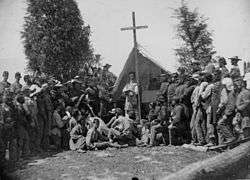
Irish Catholics in America seldom challenged the role of slavery in society as it was protected at that time by the U.S. Constitution. They viewed the abolitionists as anti-Catholic and anti-Irish. Irish Catholics were generally well received by Democrats in the South.[82]
In contrast, most Irish Nationalists and Fenians supported the abolition of slavery. Daniel O'Connell, the Catholic leader of the Irish in Ireland, supported abolition in the United States. He organized a petition in Ireland with 60,000 signatures urging the Irish of the United States to support abolition. John O'Mahony, a founder of the Irish Republican Brotherhood was an abolitionist and served as colonel in the 69th Infantry Regiment during the Civil War.[83]
The Irish Catholics in America were recent immigrants; most were poor and very few owned slaves. They had to compete with free blacks for unskilled labor jobs. They saw abolitionism as the militant wing of evangelical anti-Catholic Protestantism.[84]
The Catholic Church in America had long ties in slaveholding Maryland and Louisiana. Despite a firm stand for the spiritual equality of black people, and the resounding condemnation of slavery by Pope Gregory XVI in his bull In supremo apostolatus issued in 1839, the American church continued in deeds, if not in public discourse, to avoid confrontation with slave-holding interests. In 1861, the Archbishop of New York wrote to Secretary of War Cameron: "That the Church is opposed to slavery ... Her doctrine on that subject is, that it is a crime to reduce men naturally free to a condition of servitude and bondage, as slaves." No American bishop supported extra-political abolition or interference with states' rights before the Civil War.
The secular Germans of the Forty-Eighter immigration were largely anti-slavery. Prominent Forty-Eighters included Carl Schurz and Friedrich Hecker. German Lutherans seldom took a position on slavery, but German Methodists were anti-slavery.
Black abolitionist rhetoric
Historians and scholars have largely overlooked the work of black abolitionists, instead, they have focused much of their scholarly attention on a few black abolitionists, such as Frederick Douglass.[85] Black abolitionists, though like Martin Delany and James Monroe Whitfield to name only two others, played an undeniably large role in shaping the movement. Although it is impossible to generalize an entire rhetorical movement, black abolitionists can largely be characterized by the obstacles that they faced and the ways in which these obstacles informed their rhetoric. Black abolitionists had the distinct problem of having to confront an often hostile American public, while still acknowledging their nationality and struggle.[86] As a result, many black abolitionists "intentionally adopted aspects of British, New England, and Midwestern cultures".[86] Furthermore, much of abolitionist rhetoric, and black abolitionist rhetoric in particular, were influenced by the Puritan preaching heritage.[87]
Abolitionist women
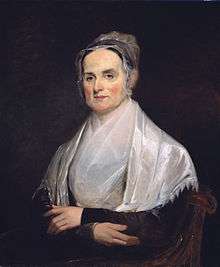
William Lloyd Garrison's abolitionist newsletter the Liberator noted in 1847, "the Anti-Slavery cause cannot stop to estimate where the greatest indebtedness lies, but whenever the account is made up there can be no doubt that the efforts and sacrifices of the WOMEN, who helped it, will hold a most honorable and conspicuous position."[88] As the Liberator states, women played a crucial role as leaders in the anti-slavery movement.
Angelina and Sarah Grimké were the first female antislavery agents, and played a variety of roles in the abolitionist movement. Though born in the South, the Grimké sisters became disillusioned with slavery and moved North to get away from it. Perhaps because of their birthplace, the Grimké sisters' critiques carried particular weight and specificity. Angelina Grimké spoke of her thrill at seeing white men do manual labor of any kind.[89] Their perspectives as native Southerners as well as women, brought a new important point of view to the abolitionist movement. In 1836, they moved to New York and began work for the Anti-Slavery Society, where they met and were impressed by William Lloyd Garrison.[90] The sisters wrote many pamphlets (Angelina's "Appeal to the Christian Women of the South" was the only appeal directly to Southern women to defy slavery laws) and played leadership roles at the first Anti-Slavery Convention of American Women in 1837.[91] The Grimkés later made a notable speaking tour around the north, which culminated in Angelina's February 1838 address to a Committee of the Legislature of Massachusetts.
Lucretia Mott was also active in the abolitionist movement. Though well known for her women's suffrage advocacy, Mott also played an important role in the abolitionist movement. During four decades, she delivered sermons about abolitionism, women's rights, and a host of other issues. Mott acknowledged her Quaker beliefs' determinative role in affecting her abolitionist sentiment. She spoke of the "duty (that) was impressed upon me at the time I consecrated myself to that Gospel which anoints 'to preach deliverance to the captive, to set at liberty them that are bruised ..."[92] Mott's advocacy took a variety of forms: she worked with the Free Produce Society to boycott slave-made goods, volunteered with the Philadelphia Female Anti-Slavery Convention of American Women, and helped slaves escape to free territory.[93]
Abby Kelley Foster, with a strong Quaker heritage, helped lead Susan B. Anthony and Lucy Stone into the abolition movement, and encouraged them to take on a role in political activism. She helped organize and was a key speaker at the first National Women's Rights Convention, held in Worcester, Massachusetts, in 1850. (The better-known Seneca Falls Convention, held in 1848, was not national).[94] She was an "ultra" abolitionist who believed in immediate and complete civil rights for all slaves. Since 1841, however, she had resigned from the Quakers over disputes about not allowing anti-slavery speakers in meeting houses (including the Uxbridge monthly meeting where she had attended with her family), and the group disowned her.[95][96][97] Abby Kelley became a leading speaker and the leading fundraiser for the American Anti-slavery Society. Radical abolitionism became known as "Abby Kelleyism".[98][99]
Other luminaries such as Lydia Maria Child, Elizabeth Cady Stanton, Susan B. Anthony, Harriet Tubman, and Sojourner Truth all played important roles in abolitionism. But even beyond these well-known women, abolitionism maintained impressive support from white middle-class and some black women. It was these women who performed many of the logistical, day-to-day tasks that made the movement successful. They raised money, wrote and distributed propaganda pieces, drafted and signed petitions, and lobbied the legislatures. Though abolitionism sowed the seeds of the women's rights movement, most women became involved in abolitionism because of a gendered religious worldview, and the idea that they had feminine, moral responsibilities.[100] For example, in the winter of 1831–1832, women sent three petitions to the Virginia legislature, advocating emancipation of the state's slave population. The only precedent for such action was Catharine Beecher's organization of a petition protesting the Cherokee removal.[101] The Virginia petitions, while the first of their kind, were by no means the last. Similar backing increased leading up to the Civil War.
Even as women played crucial roles in abolitionism, the movement simultaneously helped stimulate women's-rights efforts. A full 10 years before the Seneca Falls Convention, the Grimké sisters were travelling and lecturing about their experiences with slavery. As Gerda Lerner says, the Grimkés understood their actions' great impact. "In working for the liberation of the slave," Lerner writes, "Sarah and Angelina Grimké found the key to their own liberation. And the consciousness of the significance of their actions was clearly before them. 'We Abolition Women are turning the world upside down.'"[102]
Women gained important experiences in public speaking and organizing that stood them in good stead going forward. The Grimké sisters' public speaking played a critical part in legitimizing women's place in the public sphere. Some Christian women created cent societies to benefit abolition movements, where many women in a church would each pledge to donate one cent a week to help abolitionist causes.[103]
The July 1848 Seneca Falls Convention grew out of a partnership between Lucretia Mott and Elizabeth Cady Stanton that blossomed while the two worked, at first, on abolitionist issues. Indeed, the two met at the World's Anti-Slavery Convention in the summer of 1840.[104] Mott brought oratorical skills and an impressive reputation as an abolitionist to the nascent women's rights movement.
Abolitionism brought together active women and enabled them to make political and personal connections while honing communication and organizational skills. Even Sojourner Truth, commonly associated with abolitionism, delivered her first documented public speech at the 1850 National Women's Rights Convention in Worcester. There, she argued for women's reform activism.[105]
Anti-abolititionist viewpoints
Anti-abolitionism in the North
It is easy to overstate the support for abolitionism in the North. "From Maine to Missouri, from the Atlantic to the Gulf, crowds gathered to hear mayors and aldermen, bankers and lawyers, ministers and priests denounce the abolitionists as amalgamationists, dupes, fanatics, foreign agents, and incendiaries."[106] The whole abolitionist movement, the cadre of anti-slavery lecturers, was primarily focused on the North: convincing Northerners that slavery should be immediately abolished, and freed slaves given rights.
A majority of Southerners, though by no means all, supported slavery; abolitionism existed in the South until Nat Turner's 1831 revolt.[107]:111 But only a minority in the North supported abolition, seen as an extreme, "radical" measure. (See Radical Republicans.) Horace Greeley remarked in 1854 that he had "never been able to discover any strong, pervading, over-ruling Anti Slavery sentiment in the Free States."[108] Free blacks were subject in the North as well as in the South to conditions almost inconceivable today (2019). Although the picture is neither uniform nor static, in general free blacks in the North were not citizens and could neither vote nor hold public office. They could not give testimony in court and their word was never taken against a white man's word, as a result of which white crimes against blacks were rarely punished.[109]:154–155 Black children could not study in the public schools, even though Black taxpayers helped support them,[43]:154 and there were only a handful of schools for Black students, like the African Free School in New York and the Abiel Smith School in Boston. When schools for negroes were set up in Ohio in the 1830s, the teacher of one slept in it every night "for fear whites would burn it", and at another, "a vigilance committee threatened to tar and feather [the teacher] and ride her on a rail if she did not leave".[32]:245–246 "Black education was a dangerous pursuit for teachers."[110]
Most colleges would not admit blacks. (Oberlin Collegiate Institute was the first college that survived to admit them by policy; the Oneida Institute was a short-lived predecessor.) In wages, housing, access to services, and transportation, separate but equal or Jim Crow treatment would have been a great improvement. The proposal to create the country's first college for negros, in New Haven, Connecticut, got such strong local opposition (New Haven Excitement) that it was quickly abandoned.[111][112] Schools in which blacks and whites studied together in Canaan, New Hampshire,[113] and Canterbury, Connecticut,[114] were physically destroyed by mobs.
Southern actions against white abolitionists took legal channels: Amos Dresser was tried, convicted, and publicly whipped in Knoxville, and Reuben Crandall, Prudence Crandall's younger brother, was arrested in Washington D.C., and was found innocent, although he died soon of tuberculosis he contracted in jail. (The prosecutor was Francis Scott Key.) In Savannah, Georgia, the mayor and alderman protected an abolitionist visitor from a mob.[115]
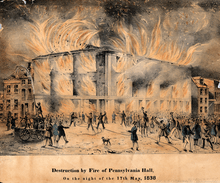
In the North there was far more serious violence by mobs, what the press sometimes called "mobocracy".[116] In 1837 Rev. Elijah P. Lovejoy, who published an abolitionist newspaper, was killed by a mob in Illinois. Only six months later, the large, modern, and expensive new hall which the Pennsylvania Anti-Slavery Society built in Philadelphia in 1838, was burned by a mob a mob three days after it opened. There were other anti-abolitionist riots in New York (1834), Cincinnati (1829, 1836, and 1841), Norwich, Connecticut (1834),[117] Washington, D.C. (1835), Philadelphia (1842), and Granville, Ohio (following the Ohio State Anti-Slavery Convention, 1836),[118] although there was also a pro-abolition riot (more precisely a pro-fugitive slave riot) in Boston in 1836[119] (and see Jerry Rescue). Between 1835 and 1838, anti-abolitionist violence "settled into a routine feature of public life in virtually all the major northern cities".[120]
Giving to blacks the same rights that whites had, as Garrison called for, was "far outside the mainstream of opinion in the 1830s."[121]:27 Some opposed even allowing blacks to join abolitionist organizations.[122] The one time that Garrison defended Southern slave-owners was when he compared them with anti-abolitionist Northerners:
I found [in the North] contempt more bitter, opposition more active, detraction more relentless, prejudice more stubborn, and apathy more frozen, than among slave owners themselves.[123]:36–37[121]:42
Alexis de Tocqueville, in Democracy in America said:
[T]he prejudice of race appears to be stronger in the States which have abolished slavery, than in those where it still exists; and nowhere is it so intolerant as In those States where servitude has never been known.[124]:460
Similarly, Harriet Beecher Stowe stated that "The bitterness of Southern slaveholders was tempered by many considerations of kindness for servants born in their houses, or upon their estates; but the Northern slaveholder traded in men and women whom he never saw, and of whose separations, tears, and miseries he determined never to hear."[125]:607
The pro-slavery reaction to abolitionism
Slave owners were angry over the attacks on what some Southerners (including the politician John C. Calhoun[126]) referred to as their "peculiar institution" of slavery. Starting in the 1830s, Southerners developed a vehement and growing ideological defense of slavery.[127] Slave owners claimed that slavery was a positive good for masters and slaves alike, and that it was explicitly sanctioned by God. Biblical arguments were made in defense of slavery by religious leaders such as the Rev. Fred A. Ross and political leaders such as Jefferson Davis.[128] Southern biblical interpretations contradicted those of the abolitionists; a popular one was that the curse on Noah's son Ham and his descendants in Africa was a justification for enslavement of blacks. Abolitionists responded, denying that neither God nor the Bible endorses slavery, at least as practiced in the Antebellum South.
Emigration
Emigration of free Africans back to their continent of origin had been proposed since the Revolutionary war. After Haiti became independent, the nation tried to recruit African Americans to migrate there after it re-established trade relations with the United States. The Haitian Union was a group formed to promote relations between the countries.[129] In West Africa, the Back-to-Africa movement and actions of president James Monroe led to the founding of Liberia, a settlement for freed Africans to live upon. After riots against blacks in Cincinnati, its black community sponsored founding of the Wilberforce Colony, an initially successful settlement of African-American immigrants to Canada. The colony was one of the first such independent political entities. It lasted for a number of decades and provided a destination for about 200 black families emigrating from a number of locations in the United States.[129]
Colonization and the founding of Liberia
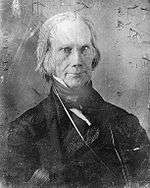
In the early 19th century, a variety of organizations were established that advocated relocation of black people from the United States to a place where they would enjoy greater freedom. During the 1820s and 1830s the American Colonization Society (A.C.S.) was the primary vehicle for proposals to "return" black Americans to freedom in Africa, regardless of whether they were native-born in the United States. It had broad support nationwide among white people, Northerners as well as prominent Southern leaders such Henry Clay and James Monroe, who believed it a better solution than simply freeing slaves. Clay said that due to
unconquerable prejudice resulting from their color, they [the blacks] never could amalgamate with the free whites of this country. It was desirable, therefore, as it respected them, and the residue of the population of the country, to drain them off.[130]
Most African Americans opposed colonization, and simply wanted to be given the rights of free citizens in the United States. One notable opponent of such plans was the wealthy free black abolitionist James Forten of Philadelphia.
After attempts to plant small settlements on the coast of west Africa, the A.C.S. established the colony of Liberia in 1821–22. Over the next four decades, it assisted thousands of former slaves and free black people to move there from the United States. The disease environment they encountered was extreme, and most migrants died fairly quickly. Enough survived to declare independence in 1847. American support for colonization waned gradually through the 1840s and 1850s, largely because of the efforts of abolitionists to promote emancipation of slaves and the granting of United States citizenship to them. The Americo-Liberians established an elite who ruled Liberia continuously, treating native blacks as whites in the U.S. had treated them, until the military coup of native blacks in 1980.[131]
See also
- Abolitionism in France
- Abolitionism in New Bedford, Massachusetts
- Abolitionism in Boston, Massachusetts
- Abolitionism in the United Kingdom
- John Quincy Adams and abolitionism
- Come-outer
- Compensated emancipation
- Fire-Eaters, pro-slavery secessionists
- History of slavery
- History of slavery in the United States
- List of opponents of slavery
- Proslavery
- James Redpath
- Slavery among Native Americans in the United States
- Slavery in Canada
- Slavery in the colonial United States
- Timeline of abolition of slavery and serfdom
- Treatment of slaves in the United States
- George Washington and slavery
Notes
- The American Anti-Slavery Society offered twelve of the Lane Rebels "commissions and employment". "On our way to our lecturing field, we stopped at Putnam and assisted [in April of 1835] in the formation of the Ohio Anti-Slavery Society."[43]
[W]e gathered at Cleveland, where, by the grace of Judge Sterling, his law office was made free to us for the purpose, and there was opened a school of abolition, where, copying documents, with hints, discussions and suggestions, we spent two weeks in earnest and most profitable drill. A chemical question arose, which related to tar and feathers and how to erase their stain. This practical question was disposed of in a single lesson. The names of those availing themselves of this course were: T. D. Weld, S[ereno] W. Streeter, Edward Weld, H. B. Stanton, H[untington] Lyman, James A. Thome, J[ohn] W. Alvord, M[arcus] R. Robinson, George Whipple and W. T. Allan.[44]:67–68
The American Anti-Slavery Society soon had up to 70 agents.
References
- For the famous image see Jonathan Rinck, "Abolition's Indelible Image." Michigan History Magazine (Nov/Dec 2009) 93#6 pp 8–11.
- Nic Butler, "The End of the Trans-Atlantic Slave Trade" (Charleston County Public Library, 2018)
- James M. McPherson (1995). The Abolitionist Legacy: From Reconstruction to the Naacp. Princeton University Press. p. 4. ISBN 9780691100395.
- Robins, R. G. (2004). A. J. Tomlinson: Plainfolk Modernist. Oxford University Press. ISBN 9780199883172.
- Lederer, Laura J. (8 February 2018). Modern Slavery: A Documentary and Reference Guide. ABC-CLIO. pp. 2–4. ISBN 978-1-4408-4499-7.
- Olmstead, Clifton E. (1964). History of Religion in the United States. Prentice-Hall. p. 183.
- Wilson, Thomas D. (12 February 2015). The Oglethorpe Plan: Enlightenment Design in Savannah and Beyond. University of Virginia Press. pp. 128–133<. ISBN 978-0-8139-3711-3.
- p. 34
- Adams, Catherine; Pleck, Elizabeth H. (1 February 2010). Love of Freedom: Black Women in Colonial and Revolutionary New England. Oxford University Press. pp. 130, 137, 239. ISBN 978-0-19-974178-6.
- Sara Kakazu, "Slew, Jenny, 1719–?)," in African American National Biographyonline
- Newman, Richard S. (2002). The Transformation of American Abolitionism: Fighting Slavery in the Early Republic. Chapel Hill: University of North Carolina Press. ISBN 0-8078-2671-5.
- John Woolman. "A Quaker Abolitionist Travels Through Maryland and Virginia". Extract from The Journal of John Woolman, 1757, New York: Houghton Mifflin, 1909, pp. 209–17.
- Thomas Paine; Thomas Paul Slaughter (2001). Common Sense and Related Writings. Palgrave Macmillan. p. 57. ISBN 9780312237042.
- Lauber, Almon Wheeler, Indian Slavery in Colonial Times Within the Present Limits of the United States. New York: Columbia University, 1913. See also the Rhode Island Historical Society FAQ Archived 11 January 2009 at the Wayback Machine.
- Jay Coughtry (1981): The Notorious Triangle: Rhode Island and the African Slave Trade, 1700–1807. Philadelphia, Pa.
- Sewall, Samuel (1700). The Selling of Joseph: A Memorial. Boston: Bartholomew Green and John Allen (Massachusetts Historical Society). Retrieved 9 December 2011.
- Pennsylvania's Gradual Abolition Act Archived 22 December 2015 at the Wayback Machine
- Monticello Foundation, 2012
- Seymour Stanton Black. Benjamin Franklin: Genius of Kites, Flights, and Voting Rights.
- Foner, Eric (2010). The Fiery Trial: Abraham Lincoln and American Slavery. New York: W. W. Norton & Company, Inc. p. 14.
- Peterson, 1960 p. 189.
- Cogliano 2006, p. 219.
- Lucia Stanton (1993), "'Those Who Labor For My Happiness': Thomas Jefferson and His Slaves", in Peter S. Onuf (ed.), Jeffersonian Legacies, University of Virginia Press, p. 147.
- Sutton, Robert K. (2017). Stark Mad Abolitionists: Lawrence, Kansas, and the Battle Over Slavery in the Civil War Era. Skyhorse Publishing. p. 5. ISBN 978-1510716490.
- Wiggins, John H. (1838). A review of anti-abolition sermon, preached at Pleasant Valley, N. Y., by Rev. Benjamin F. Wile, August, 1838. Whitesboro, New York: Press of the Oneida Institute.
- Holy Warriors: The Abolitionists and American Slavery by Jamaes Brewer Stewart, p. 78
- James Brewer Stewart (1997). Holy Warriors: The Abolitionists and American Slavery. Macmillan. p. 78. ISBN 9780809015962.
- Blight, David W. (2001)Passages to Freedom: The Underground Railroad in History and Memory. Smithsonian Books
- D.p.m (18 September 1857). "Lynching an Abolitionist in Mississippi". The New York Times.
- Sernett, Milton C. (1986). Abolition's axe : Beriah Green, Oneida Institute, and the Black freedom struggle. Syracuse University Press. ISBN 9780815623700.
- Green, Beriah (1833). Four sermons preached in the chapel of the Western Reserve College : on Lord's Days, November 18th and 25th, and December 2nd and 9th, 1832. Cleveland.
- Fletcher, Robert Samuel (1943). A history of Oberlin College from its foundation through the civil war. Oberlin College. OCLC 189886.
- Lesick, Lawrence Thomas (1980). The Lane rebels : evangelicalism and antislavery in antebellum America. Metuchen, New Jersey: Scarecrow Press. ISBN 9780810813724.
- Barnes, Gilbert Hobbs (1964). The antislavery impulse, 1830–1844. New York: Harcourt, Brace & World.
- Marianne Ruuth (1996). Frederick Douglass, pp. 117–18. Holloway House Publishing, 1996.
- Epps, Henry. A Concise Chronicle History of the African-American People Experience in America. Lulu. com, 2012.
- Chapman, Maria Weston (1839). Right and Wrong in Massachusetts. Boston: Dow and Jackson.
- Torrey, E. Fuller (2013). The Martyrdom of Abolitionist Charles Torrey. Baton Rouge: Louisiana State University Press.
- Wm. L. Garrison (1854). "No Compromise with Slavery".; also Mayer: All in the Fire, pp. 65–67, 475.
- Noel B, Gerson, Harriet Beecher Stowe (1976) p. 68.
- Introduction – Social Aspects of the Civil War Archived 14 July 2007 at the Wayback Machine, National Park Service
- Leon F. Litwack and August Meier, eds., "John Mercer Langston: Principle and Politics", in Black Leaders of the 19th century, University of Illinois Press, 1991, pp. 106–11
- Committee (Augustus Wattles, John W. Alvord, Samuel Wells, H. Lyman, Marcus R. Robinson). "Report on the condition of the people of color in the state of Ohio". Proceedings of the Ohio Anti-Slavery Convention, held at Putnam, on the 22d, 23d, and 24th of April, 1835.CS1 maint: multiple names: authors list (link)
- Lyman, H[untington] (1883). "'Lane Seminary Rebels'" (PDF). In Ballantine, W. G. (ed.). The Oberlin Jubilee 1833–1883. Oberlin, Ohio: E. J. Goodrich. pp. 60–69.
- James A. Morone (2004). Hellfire Nation: The Politics of Sin in American History. Yale University Press. p. 154. ISBN 0300105177.
- Fergus M. Bordewich, America's Great Debate: Henry Clay, Stephen A. Douglas, and the Compromise That Preserved the Union (2012) excerpt and text search
- Lewis Gould's Grand Old Party: A History of the Republicans (2003) chapter 1
- Eric Foner. Free Soil, Free Labor, Free Men: The Ideology of the Republican Party Before the Civil War (1970)
- James Oakes (2012). Freedom National: The Destruction of Slavery in the United States, 1861–1865. W. W. Norton. p. 12. ISBN 9780393065312.
- Frederick J. Blue in American Historical Review (April 2006) v. 111 pp. 481–82.
- David Potter, The Impending Crisis (1976), pp. 378–79.
- David S. Reynolds, John Brown, Abolitionist: The Man Who Killed Slavery, Sparked the Civil War, and Seeded Civil Rights (2005); Ken Chowder, "The Father of American Terrorism". American Heritage (2000) 51(1): 81+ online at "Archived copy" (PDF). Archived from the original on 8 August 2007. Retrieved 22 April 2017.CS1 maint: archived copy as title (link) CS1 maint: BOT: original-url status unknown (link) and Stephen Oates quoted at "Archived copy". Archived from the original on 10 May 2009. Retrieved 4 April 2007.CS1 maint: archived copy as title (link) CS1 maint: BOT: original-url status unknown (link)
- David Potter, The Impending Crisis: 1848–1861 (1976), chapter 14, quote from p. 367. Allan Nevins, Ordeal of the Union: A House Dividing, pp. 472–77, and The Emergence of Lincoln, vol. 2, pp. 71–97.
- Kathleen Collins, "The Scourged Back", History of Photography 9 (January 1985): 43–45.
- http://www.freedmen.umd.edu/freeterr.htm
- Foner, Eric (2010). The Fiery Trial: Abraham Lincoln and American Slavery. New York: W. W. Norton. ISBN 978-0-393-06618-0.
- Lowell Harrison & James C. Klotter, A New History of Kentucky, University Press of Kentucky, 1997; p. 180; ISBN 9780813126210.
- Hornsby, Alan, ed. (2011). "Delaware". Black America: A State-by-State Historical Encyclopedia. ABC-CLIO. p. 139. ISBN 9781573569767.
- William E. Juhnke, "Benjamin Franklin's View of the Negro and Slavery." Pennsylvania History 41.4 (1974): 375–389. online
- Weld, Theodore Dwight (1837). The Power of Congress over the District of Columbia. New York: American Anti-slavery Society.
- Elaine MacEachern, "Emancipation of Slavery in Massachusetts: A Reexamination, 1770–1790." Journal of Negro History 55.4 (1970): 289–306.
- "African American Voting Rights (go down the page)
- Seymour Drescher, Abolition: A History of Slavery and Antislavery (Cambridge University Press, 2009).
- Randall M. Miller, John David Smith, Dictionary of Afro-American Slavery, Greenwood Publishing Group, 1997, p. 471.
- The population of the United States in 1860, p313 Eight Census of the United States, 1860
- Ira Berlin and Leslie Harris (2005); Gellman (2006);
- William Edward Burghardt Du Bois (1904). The Suppression of the African Slave-trade to the United States of America, 1638–1870. Social Science Press. p. 95.
- Foner, Eric. "Forgotten step towards freedom", The New York Times. 30 December 2007.
- David Head, "Slave Smuggling by Foreign Privateers: The Illegal Slave Trade and the Geopolitics of the Early Republic", Journal of the Early Republic (2013), 33#3 p. 538.
- Frances J. Stafford, "Illegal Importations: Enforcement of the Slave Trade Laws Along the Florida Coast, 1810–1828." Florida Historical Quarterly 46.2 (1967): 124–133. online
- Andrew Levy, The First Emancipator: Slavery, Religion and the Quiet Revolution of Robert Carter, New York: Random House, 2005, p. xi
- Peter Kolchin, American Slavery, 1619–1877, New York: Hill and Wang, 1994, pp. 78, 81–82.
- Schlesinger Age of Jackson, p. 190.
- Dresser, Amos (26 September 1835). "Amos Dresser's Own Narrative". The Liberator. p. 4 – via newspapers.com.
- "Amos Dresser's Case". Evening Post. 17 September 1835. p. 1 – via newspapers.com.
- David Brion Davis, Inhuman Bondage (2006) pp. 197, 409; Stanley Harrold, The Abolitionists and the South, 1831–1861 (1995) p. 62; Jane H. and William H. Pease, "Confrontation and Abolition in the 1850s" Journal of American History (1972) 58(4): 923–937.
- Eric Foner. Free Soil, Free Labor, Free Men: The Ideology of the Republican Party Before the Civil War (1970), p. 9.
- "An activist path: Mill owner founded Uxbridge anti-slavery society, by Susan Spence". telegram.com. Retrieved 28 September 2012.
- Gutenson, Charles E. (2012). The Right Church. Abingdon Press. p. 58. ISBN 9781426749117.
- "Amistad" Archived 6 November 2007 at the Wayback Machine, Smithsonian Institution
- James Brewer Stewart, Holy Warriors: The Abolitionists and American Slavery (1976)
- John F. Quinn, "Expecting the Impossible? Abolitionist Appeals to the Irish in Antebellum America", New England Quarterly (2009), 82#4 pp. 667–710.
- Patrick Steward, Bryan P. McGovern, The Fenians: Irish Rebellion in the North Atlantic World, 1858 – 1876, p. 51.
- Bryan P. McGovern (2009). John Mitchel: Irish Nationalist, Southern Secessionist. University of Tennessee Press. p. 138. ISBN 9781572336544.
- Levesque, George A. (1970). "Black Abolitionists in the Age of Jackson: Catalysts in the Radicalization of American Abolitionism". Journal of Black Studies. 1 (2): 187–201. doi:10.1177/002193477000100205. JSTOR 2783802.
- Thomas O. Sloane, "Abolitionist Rhetoric", Encyclopedia of Rhetoric, Oxford University Press, 2001, p. 8.
- Bormann, Ernest. Forerunners of Black Power, The Rhetoric of Abolition. Englewood Cliffs: Prentice Hall, 1971. Print.
- Jeffrey, Julie Roy (1998). The Great Silent Army of Abolitionism. Chapel Hill, NC: University of North Carolina Press. p. 1.
- Lerner, Gerda (2004). The Grimké Sisters from South Carolina: Pioneers for Women's Rights and Abolition. Chapel Hill, NC: University of North Carolina Press. p. 61.
- Lerner, Gerda (2004). The Grimké Sisters from South Carolina: Pioneers for Women's Rights and Abolition. Chapel Hill, NC: University of North Carolina Press. pp. 101–02.
- Lerner, Gerda (October 1963). "The Grimke Sisters and the Struggle Against Race Prejudice". The Journal of Negro History. 48 (4): 278, 285. doi:10.2307/2716330. JSTOR 2716330.
- Greene, Dana (April 1981). "Quaker Feminism: The Case of Lucretia Mott". Pennsylvania History. 48 (2): 149.
- Turner, Lorenzo D. (April 1959). "'Lucretia Mott'. by Otelia Cromwell". The Journal of Negro History. 44 (2): 186. doi:10.2307/2716042. JSTOR 2716042.
- "Abby Kelley Foster at First National Woman's Rights Convention". Worcester Women's History Project. Retrieved 23 July 2010.
- Morin 1994, p. 19.
- Sterling 1991, p. 123.
- Buffum, Lucille (1914). Elizabeth Buffum Chase- Her Life and its Environment. W. B. Clarke Co.
- Sterling 1991, pp. 1–3, 41–59, 230.
- Morin 1994, pp. 19–20.
- Jeffrey, Julie Roy (1998). The Great Silent Army of Abolitionism. Chapel Hill, NC: University of North Carolina Press. p. 2.
- Breen, Patrick H. (2002). "The Female Antislavery Petition Campaign of 1831–32". The Virginia Magazine of History and Biography. 110 (3): 377.
- Lerner, Gerda (2004). The Grimké Sisters from South Carolina: Pioneers for Women's Rights and Abolition. Chapel Hill, NC: University of North Carolina Press. p. 10.
- Divided by Faith: Evangelical Religion and the Problem of Race in America. Oxford, New York: Oxford University Press. 6 September 2001. ISBN 9780195147070.
- Sklar, Kathryn (2000). Women's Rights Emerges Within the Anti-Slavery Movement, 1830–1870: A Brief History with Documents. Boston: St Martin's. p. 50.
- Sklar, Kathryn (2000). Women's Rights Emerges Within the Anti-Slavery Movement, 1830–1870: A Brief History with Documents. Boston: St Martin's. p. 63.
- Farrow, Anne; Lang, Joel; Frank, Jenifer (2005). Complicity. How the North promoted, prolonged, and profited from slavery. New York: Ballantine Books. p. 166. ISBN 9780345467836.
- Ceplair, Larry (1989). The Public Years of Sarah and Angelina Grimké. Selected Writings 1835–1839. New York: Columbia University Press. ISBN 023106800X.
- Gara, Larry (March 1969). "Slavery and the Slave Power: A Crucial Distinction". Civil War History. 15 (1): 5–18. doi:10.1353/cwh.1969.0006. JSTOR 418702.
- "Persecution of colored people". Anti-Slavery Record. Vol. 1 no. 12. December 1835.
- Baumgartner, Kabria (2017). "Building the Future. White Women, Black Education, and Civic Inclusion in Antebellum Ohio". Journal of the Early Republic. 37 (1): 117–145, at p. 117. doi:10.1353/jer.2017.0003 – via Project MUSE.
- Moss, Hilary (2014). "'Cast Down on Every Side': The Ill-Fated Campaign to Found an 'African College' in New Haven". In Normen, Elizabeth J.; Harris, Katherine J.; Close, Stacey K.; Mitchell, Wm. Frank; White, Olivia (eds.). African American Connecticut Explored. Wesleyan University Press. pp. 148–154. ISBN 978-0-8195-7398-8 – via Project MUSE.
- Garrison, Wm. Lloyd (1831). An address, delivered before the free people of color, in Philadelphia, New-York, and other cities, during the month of June, 1831 (3rd ed.). Boston. OCLC 1058274625.
- Irvine, Russell W.; Dunkerton, Donna Zani (Winter 1998). "The Noyes Academy, 1834–35: The Road to the Oberlin Collegiate Institute and the Higher Education of African-Americans in the Nineteenth Century". Western Journal of Black Studies. 22 (4): 260–273. Retrieved 19 September 2019 – via Ebscohost.
- Wormley, G. Smith (1923). "Prudence Crandall". Journal of Negro History. 8 (1): 72–80. doi:10.2307/2713460. JSTOR 2713460.
- Tomek, Beverly C. (2014). Pennsylvania Hall a "legal lynching" in the shadow of the Liberty Bell. New York: Oxford University Press. p. 77. ISBN 9780199837601.
- Grimsted, David (1998). American Mobbing 1828–1861: Toward Civil War. Oxford University Press. ISBN 0195172817.
- "Another abolition riot". The National Gazette (Philadelphia, Pennsylvania). 16 July 1834. p. 2 – via newspapers.com.
- "The Granville Riot. Both sides of abolition movement erupted into violence". The Newark Advocate (Newark, Ohio). 4 July 2005. p. 35 – via newspapers.com.
- Levy, Leonard W. (March 1952). "The 'Abolition Riot': Boston's First Slave Rescue". New England Quarterly. 25 (1): 85–92. doi:10.2307/363035. JSTOR 363035.
- Browne, Stephen H. (1999). "Violent Inventions: Witnessing Slavery in the Pennsylvania Hall Address". Angelina Grimké: rhetoric, identity, and the radical imagination. Michigan State University Press. p. 139. ISBN 0870135309 – via Project MUSE.
- Williams, Jr., Donald E (2014). Prudence Crandall's legacy: the fight for equality in the 1830s, Dred Scott, and Brown v. Board of Education. Middletown, Connecticut: Wesleyan University Press. ISBN 9780819576460.
- Litwack, Leon F. (1961). The Abolitionist Dilemma: The Antislavery Movement and the Northern Negro (PDF). New England Quarterly. 34. pp. 50–73.
- Chapman, John Jay (1921). William Lloyd Garrison. Boston: Atlantic Monthly Press.
- Tocqueville, Alexis de (1864). Bowen, Francis (ed.). Democracy in America. 1. Translated by Reeve, Henry (4th ed.). Cambridge, Massachusetts: Sever and Frances.
- Stowe, Harriet Beecher (June 1879). "The Education of Freedmen". North American Review. 128 (271): 605–615. JSTOR 25100763.
- "John C. Calhoun", Clemson University
- David Brion Davis, Inhuman Bondage (2006), pp. 186–92.
- Mitchell Snay, "American Thought and Southern Distinctiveness: The Southern Clergy and the Sanctification of Slavery", Civil War History (1989) 35(4): 311–28; Elizabeth Fox-Genovese and Eugene D. Genovese, The Mind of the Master Class: History and Faith in the Southern Slaveholders' Worldview (2005), pp. 505–27.
- Taylor, Nikki M. Frontiers of Freedom: Cincinnati's Black Community, 1802–1868. Ohio University Press, 2005, ISBN 0-8214-1579-4, pp. 50–79.
- Maggie Montesinos Sale, The slumbering volcano: American slave ship revolts and the production of rebellious masculinity, Duke University Press, 1997, p. 264. ISBN 0-8223-1992-6
- "History Haunts War-Torn Liberia", National Geographic, July 2003
Further reading
- Abzug, Robert H. Cosmos Crumbling: American Reform and the Religious Imagination. Oxford, 1994. ISBN 0-19-503752-9.
- Bacon, Jacqueline. The Humblest May Stand Forth: Rhetoric, Empowerment, and Abolition. University of South Carolina Press, 2002. ISBN 1-57003-434-6.
- Barnes, Gilbert H. The Anti-Slavery Impulse 1830–1844. Reprint, 1964. ISBN 0-7812-5307-1.
- Berlin, Ira and Leslie Harris (eds.) Slavery in New York. New Press, 2005. ISBN 1-56584-997-3.
- Blue, Frederick J. No Taint of Compromise: Crusaders in Antislavery Politics. Louisiana State University Press, 2004. ISBN 0-8071-2976-3.
- Bordewich, Fergus M. Bound for Canaan: The Underground Railroad and the War for the Soul of America. HarperCollins, 2005. ISBN 0-06-052430-8.
- Carey, Brycchan. From Peace to Freedom: Quaker Rhetoric and the Birth of American Antislavery, 1657–1761. New Haven, CT: Yale University Press, 2012.
- Child, Lydia Maria. (1833). An Appeal in Favor of That Class of Americans Called Africans. Boston: Allen and Ticknor.[1]
- Cogliano, Francis D (2006). Thomas Jefferson: Reputation and Legacy. Edinburgh University Press. ISBN 978-0-7486-2499-7.CS1 maint: ref=harv (link)
- Crawford, Alan Pell (2008). Twilight at Monticello: The Final Years of Thomas Jefferson. Random House. ISBN 978-1-4000-6079-5.CS1 maint: ref=harv (link)
- Davis, David Brion, Inhuman Bondage: The Rise and Fall of Slavery in the New World Oxford, 2006. ISBN 0-19-514073-7.
- Delbanco, Andrew. The Abolitionist Imagination. Cambridge, MA: Harvard University Press, 2012.
- Dinius, Marcy J. (2018). "Press". Early American Studies: An Interdisciplinary Journal. 16 (4): 747–755. doi:10.1353/eam.2018.0045 – via Project MUSE.
- Filler, Louis. The Crusade Against Slavery 1830–1860. 1960. ISBN 0-917256-29-8.
- Frost, Karolyn Smardz; Osei, Kwasi (Cover design); South, Sunny (Cover art) (2007). I've Got a Home in Glory Land: A Lost Tale of the Underground Railroad. New York: Farrar, Straus and Giroux. ISBN 978-0-374-16481-2. ISBN 978-0-374-53125-6.
- David Nathaniel Gellman. Emancipating New York: The Politics of Slavery And Freedom, 1777–1827 Louisiana State University Press, 2006. ISBN 0-8071-3174-1.
- Griffin, Clifford S. Their Brothers' Keepers: Moral Stewardship in the United States 1800–1865. Rutgers University Press, 1967. ISBN 0-313-24059-0.
- Hammond, John Craig and Matthew Mason (eds.) Contesting Slavery: The Politics of Bondage and Freedom in the New American Nation. Charlottesville, VA: University of Virginia Press, 2011.
- Harrold, Stanley. The Abolitionists and the South, 1831–1861. University Press of Kentucky, 1995. ISBN 0-8131-0968-X.
- Harrold, Stanley. The American Abolitionists. Longman, 2000. ISBN 0-582-35738-1.
- Harrold, Stanley. The Rise of Aggressive Abolitionism: Addresses to the Slaves. University Press of Kentucky, 2004. ISBN 0-8131-2290-2.
- Hassard, John R. G. The Life of John Hughes: First Archbishop of New York. Arno Press, 1969
- Horton, James Oliver. "Alexander Hamilton: Slavery and Race in a Revolutionary Generation" New-York Journal of American History 2004 65(3): 16–24. ISSN 1551-5486
- Huston, James L. "The Experiential Basis of the Northern Antislavery Impulse2. Journal of Southern History 56:4 (November 1990): 609–640.
- Mayer, Henry All on Fire: William Lloyd Garrison and the Abolition of Slavery St. Martin's Press, 1998. ISBN 0-312-18740-8.
- McKivigan, John R. The War Against Proslavery Religion: Abolitionism and the Northern Churches, 1830–1865 Cornell University Press, 1984. ISBN 0-8014-1589-6.
- McPherson, James M. The Abolitionist Legacy: From Reconstruction to the NAACP. Princeton University Press, 1975. ISBN 0-691-04637-9.
- Osofsky, Gilbert. "Abolitionists, Irish Immigrants, and the Dilemmas of Romantic Nationalism" American Historical Review 1975 80(4): 889–912. ISSN 0002-8762 in JSTOR
- Perry, Lewis and Michael Fellman, eds. Antislavery Reconsidered: New Perspectives on the Abolitionists. Louisiana State University Press, 1979. ISBN 0-8071-0889-8.
- Peterson, Merrill D. John Brown: The Legend Revisited. University Press of Virginia, 2002. ISBN 0-8139-2132-5.
- Peterson, Merrill D. (1960). The Jefferson Image in the American Mind. University of Virginia Press. p. 548. ISBN 0-8139-1851-0.
- Pierson, Michael D. Free Hearts and Free Homes: Gender and American Antislavery Politics. University of North Carolina Press, 2003. ISBN 0-8078-2782-7.
- Quarles, Benjamin. "Sources of Abolitionist Income", Mississippi Valley Historical Review (1945) 32#1 pp. 63–76 in JSTOR
- Schafer, Judith Kelleher. Becoming Free, Remaining Free: Manumission and Enslavement in New Orleans, 1846–1862. Louisiana State University Press, 2003. ISBN 0-8071-2862-7.
- Salerno, Beth A. Sister Societies: Women's Antislavery Organizations in Antebellum America. Northern Illinois University Press, 2005. ISBN 0-87580-338-5.
- Speicher, Anna M. The Religious World of Antislavery Women: Spirituality in the Lives of Five Abolitionist Lecturers. Syracuse University Press, 2000. ISBN 0-8156-2850-1.
- Stauffer, John. The Black Hearts of Men: Radical Abolitionists and the Transformation of Race. Harvard University Press, 2002. ISBN 0-674-00645-3.
- Vorenberg, Michael. Final Freedom: The Civil War, the Abolition of Slavery, and the Thirteenth Amendment. Cambridge University Press, 2001. ISBN 0-521-65267-7.
- Wilson, Thomas D. The Oglethorpe Plan: Enlightenment Design in Savannah and Beyond. Charlottesville, VA: University of Virginia Press, 2012. ISBN 978-0-8139-3290-3.
- Zilversmit, Arthur. The First Emancipation: The Abolition of Slavery in the North. University of Chicago Press, 1967. ISBN 0-226-98332-3.
External links
| Wikiquote has quotations related to: Abolitionism in the United States |
| Wikisource has the text of the 1921 Collier's Encyclopedia article Abolitionists. |
- Original Document Proposing Abolition of Slavery 13th Amendment
- "John Brown's body and blood" by Ari Kelman: a review in the TLS, 14 February 2007.
- Report of the Brown University Steering Committee on Slavery and Justice
- Elijah Parish Lovejoy: A Martyr on the Altar of American Liberty
- Teaching resources about Slavery and Abolition on blackhistory4schools.com
- John Brown Museum
- American Abolitionism
- James Monroe Whitfield black Abolitionist poet "America and other poems" 1853
- American Abolitionists and Antislavery Activists, comprehensive list of abolitionist and anti-slavery activists and organizations in the United States, including historic biographies and anti-slavery timelines, bibliographies, etc.
- Underground Railroad: Escape from Slavery | Scholastic.com
- National Underground Railroad Freedom Center in Cincinnati, Ohio
- The Liberator Files, Horace Seldon's collection and summary of research of William Lloyd Garrison's The Liberator original copies at the Boston Public Library, Boston, Massachusetts.
- University of Detroit Mercy Black Abolitionist Archive, a collection of over 800 speeches by antebellum blacks and approximately 1,000 editorials from the period.
- Maps about "Slavery" in the U.S. at the Persuasive Cartography, The PJ Mode Collection, Cornell University Library
- "Dangerous Ideas: Controversial Works from the William L. Clements Library – An Appeal in Favor of that Class of Americans Called Africans". Archived from the original on 20 September 2019. Retrieved 22 October 2016.

